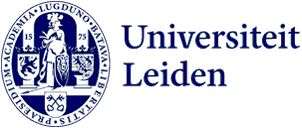
How accessible are our buildings?
Towards the end of February, three Leiden University buildings will be assessed for their accessibility to people with a disability. The assessment will be carried out by Ongehinderd, a social enterprise committed to making the Netherlands more accessible. Its founder and director, Gerard de Nooij, explains which aspects the inspectors will be looking at, and why it’s necessary.
‘We assess the accessibility of buildings in the broadest sense of the word’, says Gerard de Nooij, founder and director of Ongehinderd. ‘Not only with regard to people in wheelchairs, but also those with visual or hearing impairments and people with an intellectual disability. In the case of the Leiden University buildings, the question is: can you, whether student, staff member or visitor, do what you should be able to do in the building?’
Construction specialists and occupational therapists
The University Library on the Witte Singel, the Pieter de la Court Building and the Kamerlingh Onnes Building will be the first Leiden University buildings to be subjected to an accessibility assessment by the inspectors from Ongehinderd. The inspectors are construction specialists and occupational therapists, who meticulously measure and map everything in the building. They use a standard method, De Nooij explains, which ensures that all aspects of accessibility are taken into account.

Edges of staircase treads marked
So what kinds of things are they looking for? ‘It will be clear to everyone that we look at wheelchair accessibility, but we also look to see if staircases have a handrail and whether it’s in the right place and at the right height. People with vision loss use the handrail to go up and down the stairs safely. We also check whether the edges of staircase treads are marked, so that anyone who with vision loss knows where the staircase begins. In lecture halls where there is amplified sound, we check whether there is an audio induction loop system, which is an aid for those with hearing loss.
Clear signage
When you’re talking about a university, you might not immediately think of people with an intellectual disability, but they might also sometimes visit our buildings. One of the important factors for them is that signage is clear and hanging in the right place. That can be achieved by using pictograms in addition to text. De Nooij: ‘The best part is that actually, everyone in the building benefits from that!’
Simple modifications
Ultimately, Ongehinderd will draw up a report for the University containing any necessary recommendations. A distinction will be made between matters which can be modified quite simply – applying stickers to glass walls, for example, so that visually impaired people notice them immediately – and more structural modifications which could possibly be taken into consideration in any future renovation. ‘And naturally, we take into account the possibilities in the building. That’s certainly important when you consider the many listed buildings at the University.’
Details openly accessible for every visitor
The results of the accessibility assessment will not only appear in a report but will also be publicly accessible through the Ongehinderd app and website. People with a disability can use that app to check the accessibility of a location. It contains not only buildings at educational institutes, but also theatres, for example, and entire recreation parks. De Nooij points out that the accessibility is given in detail. ‘It not only tells you that there is a raised doorstep somewhere, for example, but also that it’s four centimetres high. The details are relevant, because not all disabilities are the same. For instance, I know I can get over those four centimetres with my wheelchair.’
Certainty and independence
With the Ongehinderd app, a new student can check for themselves how accessible their future study location is. Or a staff member can check whether a certain meeting room is easily accessible. ‘It’s really important to be able to check this for yourself, beforehand,’ says De Nooij. ‘It gives you certainty and independence.’
Accessibility assessment of Leiden University buildings by Ongehinderd
The University Library on the Witte Singel and the Pieter de la Court and Kamerlingh Onnes Buildings will be assessed by Ongehinderd on their accessibility in the week of 22 February. Inspectors will spend those days mapping the buildings, while respecting the coronavirus measures, of course. More information about exact times and locations
The NLKT (Dutch certificate of accessibility) works with four levels: bronze, silver, gold and platinum. The Kamerlingh Onnes Building will be assessed at bronze/silver level and the other two buildings at gold level. Temporary coronavirus-related modifications such as walking routes will not be taken into account in the accessibility assessment.
